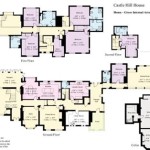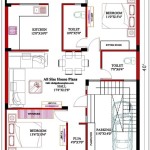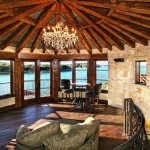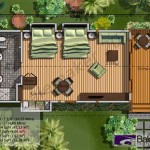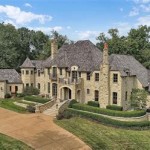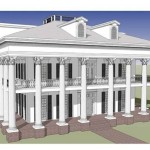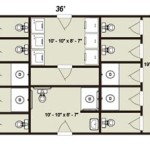Budget Home Plans in Kerala: Affordable Housing Solutions
Kerala, known for its scenic beauty and unique architectural styles, presents specific challenges and opportunities when planning a budget-friendly home. The state's climate, topography, and material costs influence design choices, impacting the overall affordability of construction. This article explores various aspects of budget home plans in Kerala, offering insights into cost-effective designs, sustainable materials, and essential considerations for homeowners looking to build affordably.
Building a home within a defined budget requires careful planning and execution. It is crucial to understand the various factors contributing to construction costs in Kerala, including land acquisition, material procurement, labor charges, and regulatory compliance. An informed approach to design and material selection can significantly reduce the financial burden of construction.
The primary objective of budget home plans is to maximize functionality while minimizing unnecessary expenses. This often involves prioritizing essential features and opting for simpler designs that are easier and faster to construct. The choice of materials plays a crucial role, with locally sourced and readily available options offering substantial cost savings.
Key Considerations for Budget Home Planning
Before embarking on the construction process, several key aspects need careful consideration. These include understanding local building regulations, selecting an appropriate architectural style, and optimising the layout for efficient space utilization. Neglecting these critical steps can lead to unexpected costs and delays.
Understanding local building regulations in Kerala is paramount. These regulations govern aspects such as building height, setback distances, and permitted construction zones. Compliance with these regulations is mandatory and can influence the design and overall cost of the project. Consulting with a local architect or engineer is recommended to ensure adherence to all applicable rules.
The selection of an appropriate architectural style significantly impacts the budget. While Kerala's traditional architecture is aesthetically appealing, it often involves intricate details and expensive materials. Modern architectural styles, with their focus on simplicity and functionality, can offer more cost-effective solutions. A balance between aesthetic preferences and budgetary constraints is essential.
Efficient space utilization is crucial in budget home plans. Designing a layout that maximizes usable area while minimizing unnecessary spaces can significantly reduce the overall construction cost. Open-plan designs, which combine living, dining, and kitchen areas, are a popular choice for budget-friendly homes as they reduce the need for internal walls and doors.
Cost-Effective Design Strategies
Implementing innovative design strategies can contribute significantly to reducing construction costs. These strategies focus on minimizing material wastage, optimizing structural design, and incorporating energy-efficient features. Employing skilled professionals is essential to translate these strategies into tangible results.
Minimizing material wastage is a critical aspect of cost control. Accurate measurement and careful planning can reduce the amount of material discarded during construction. Using standard-sized materials and optimizing the design to fit these dimensions can also help minimize waste. Proper storage and handling of materials on-site are equally important to prevent damage and loss.
Optimizing the structural design can lead to significant cost savings. A well-designed structure requires less material and labor for construction. Employing lightweight construction techniques, such as using hollow concrete blocks or prefabricated elements, can reduce the overall weight of the building and therefore the cost of the foundation. Consulting with a structural engineer is essential to ensure the stability and safety of the structure.
Incorporating energy-efficient features can reduce long-term operating costs. These features include using energy-efficient lighting, installing solar water heaters, and designing for natural ventilation. While the initial investment in these features may be slightly higher, the long-term savings on energy bills can quickly offset the initial cost.
Material Selection and Sustainable Options
The choice of materials has a substantial impact on the overall cost of construction. Selecting locally sourced and sustainable materials can reduce transportation costs, minimize environmental impact, and often offer better affordability. Understanding the properties and applications of different materials is crucial for making informed decisions.
Locally sourced materials offer significant cost advantages. Transportation costs are minimized, and the availability of materials is often more reliable. Kerala has a rich supply of natural materials, such as laterite stone, which can be used for wall construction. Using locally sourced materials also supports the local economy.
Sustainable materials are an increasingly popular choice for budget-friendly homes. These materials are often made from recycled content or are renewable resources. Bamboo, for example, is a fast-growing and sustainable material that can be used for various construction applications. Sustainable materials often have lower embodied energy, reducing their environmental impact.
Exploring alternative construction materials can also lead to cost savings. Using stabilized mud blocks, for example, can reduce the need for cement and other expensive materials. These blocks are made from a mixture of soil, cement, and water, and are compressed into a solid form. They offer good thermal insulation and are relatively easy to produce on-site.
Concrete is a common and versatile construction material, but its cost can vary significantly depending on the type and quantity used. Using recycled aggregates in concrete can reduce its cost and environmental impact. Exploring alternative concrete mixes, such as those with fly ash or ground granulated blast-furnace slag, can also offer cost savings.
Roofing materials can also contribute significantly to the overall cost. Clay tiles are a traditional roofing material in Kerala, but their cost can be relatively high. Using alternative roofing materials, such as corrugated metal sheets or fiber cement sheets, can offer more affordable options. The choice of roofing material should also consider its durability, thermal insulation properties, and aesthetic appeal.
Doors and windows are essential components of a home, and their cost can vary significantly depending on the material and design. Using locally sourced wood for doors and windows can be a cost-effective option. Alternatively, PVC or aluminum doors and windows offer durability and low maintenance requirements. The design of doors and windows should also consider ventilation and natural light.
Flooring materials can also impact the overall budget. Using locally sourced tiles or concrete flooring can be more affordable than using expensive marble or granite. Polished concrete flooring is a durable and aesthetically pleasing option that can be achieved at a relatively low cost.
Consider using reclaimed or recycled materials whenever possible. Reclaimed wood, bricks, and tiles can add character to a home while reducing construction costs. Sourcing these materials from demolition sites or salvage yards can offer significant savings.
Landscaping can enhance the aesthetic appeal of a home, but it can also add to the overall cost. Using native plants and designing a low-maintenance landscape can reduce the need for expensive gardening services. Planting trees and shrubs can also provide shade and improve the microclimate around the home.
Plumbing and electrical systems are essential components of a home, and their cost can vary depending on the complexity of the design. Using standard plumbing fixtures and optimizing the electrical layout can reduce the overall cost. Installing energy-efficient appliances and lighting can also reduce long-term operating costs.
Painting and finishing are the final stages of construction, and their cost can be significant. Using affordable paints and finishes can reduce the overall cost. Applying paint yourself can also save on labor charges. Choosing durable and easy-to-clean finishes can reduce the need for frequent maintenance.
Contingency planning is also essential. A contingency fund of 5-10% of the total construction cost should be set aside to cover unexpected expenses. This fund can provide a buffer against unforeseen challenges and prevent cost overruns.

09 Lakhs Kerala Home Plan Budget With Free 3 Bedroom House E Modern Floor Plans

15 Home Designs Below 1000 Sqft In 4 To Lakhs With Free Plan Kerala Planners

649 Sqft Low Budget 2 Bedroom Home Design And Free Plan From Bee S Kerala Plans House Bungalow Floor

Cost Effective 4 Bedroom Modern Home In Low Budget Free Plan Kerala Planners

New Low Budget Home Designs Kerala Design

Low Budget House Plans In Kerala 2024 Digit

How To Plan A Low Budget Single Floor House In Kerala

Kerala Style Three Bedroom Low Budget House Plans Under 1300 Sq Ft I Total 4 Small Hub

Building A Low Budget House In Kerala 6 Expert Tips Home Design And Floor Plans 9k Dream Houses

3 Bedroom Low Cost Single Floor Home Design With Free Plan Kerala Plans Budget House Square

